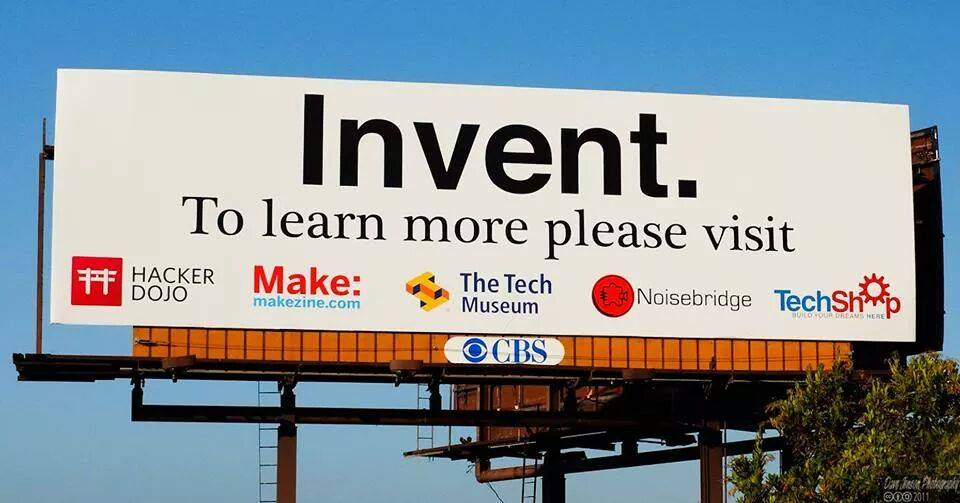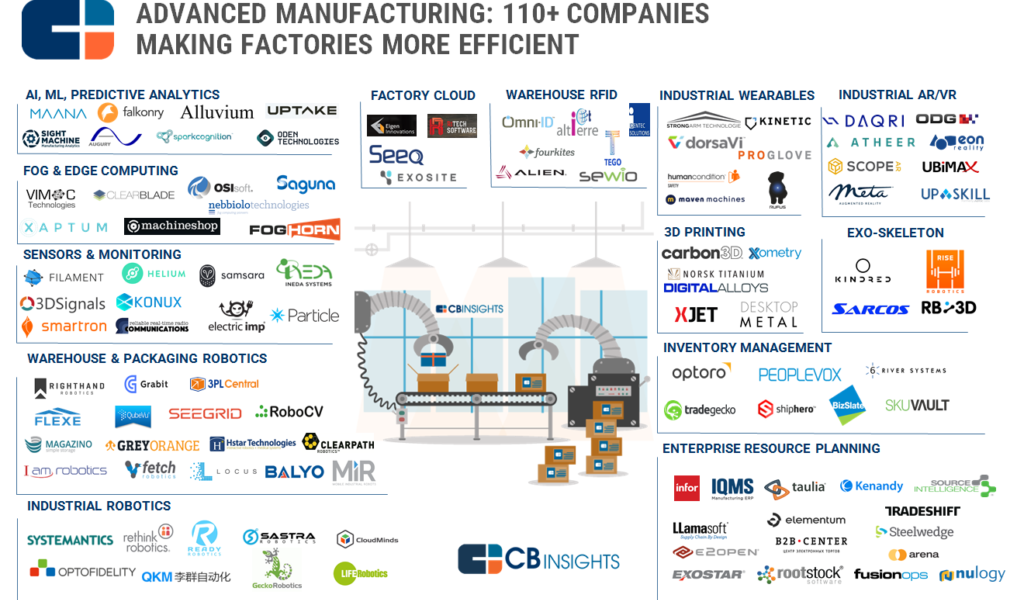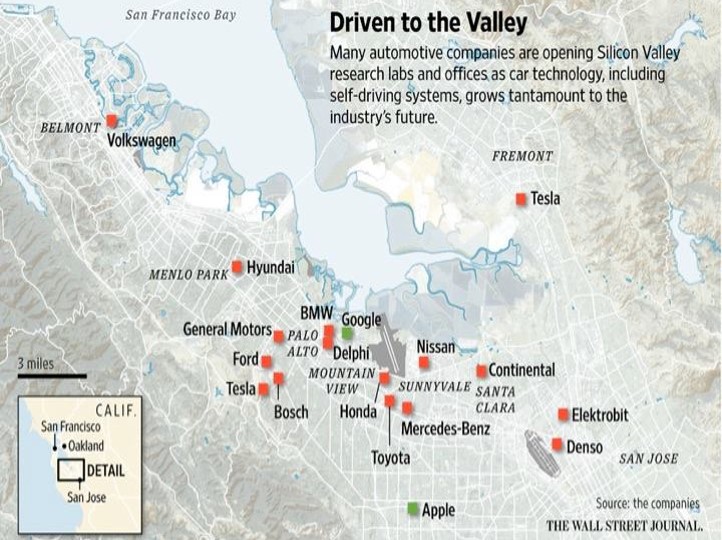Silicon Valley is changing much faster than our ideas about it. In the spring of 2014, we had an internship in Silicon Valley during the American module of the Executive MBA program of the Moscow School of Management SKOLKOVO. In August 2017, once again in California, we wondered: what is happening in the valley today? What has changed over the past three years? How will these changes affect us in the near future?
In the third part of the article on the development of silicon valley, we talk about the impact of new companies on the changes in classical industries and summarize with important conclusions for us. The first part is
here , the second is
here .
 Value Marketing in Valley Cities - Convincing and Subject
Value Marketing in Valley Cities - Convincing and SubjectEnergy Impact
Inc. rating
500 fastest growing US companies. Which industry has grown and continues to grow faster than others in the last three years?
Renewable energy (see figure).
The second company in the ranking - EnviroSolar Power, earned in 2013 - $ 103k, in 2016 - $ 37.4m. For three years, increased revenue 360 times. The company installs systems for generating energy from the sun and managing the power grid. The company employs 85 people.
 Almost every energy company works with Solar.
Almost every energy company works with Solar.9th place - Greenspire, an increase of 140 times. The company is a contractor and consultant in services for homeowners in choosing and managing energy efficiency and water supply systems.
23 - CalCom Solar, an increase of 96 times. The company designs and installs solar energy systems for agriculture, mainly in California.
24 - Ion Solar, an increase of 90 times. The company installs solar panels in eight states.
443 - Ecolibrium Solar, increased 10 times. The company supplies and installs metal structures for mounting solar panels on rooftops.
And so on.
A total of 22 energy rating or about energy companies. Together, they earned $ 721.8m in 2016, the average growth in their revenue over three years is 26 times. Energy is the fastest growing of all 24 branches of the rating. 18 out of 22 energy companies are rated in solar energy and CleanTech.
How could these companies grow so fast? We will understand by example.
At 353 place eMotorWerks company. The main product is the Juice box, fast home electric car charging systems that work efficiently with power grids.
 One of the eMotorWerks products
One of the eMotorWerks productsFounded in 2011 and runs the company a physicist from Russia, the son of an oil engineer Valery Miftakhov (Valery Miftakhov,
interview , short
article about the company in Russian,
video interview ).
In 2013, the company conducted a successful campaign on a kickstarter with charging for electric vehicles, charging five times faster and 4 times cheaper, costing $ 99. The company presented a product with open software and hardware, each of which could create its own device based on the purchased set. The product turned out to be very interesting for the target audience: for 30 days during the campaign they collected 2 times more than planned.
Today, the company produces stationary and portable chargers for installation at home or office. Their functionality also allows you to control the charging of an electric vehicle using a smartphone. The company has a large production program - portable chargers JuiceBox, adapters JuicePlug, stations JuiceStation and JuiceTower, software that allows you to calculate the best time to charge an electric car, analyzing the workload of the grid.
In 2016,
eMotorWerks revenue was $ 3.9m, an increase of 12 times over three years. The company employs 40 people.
In collaboration with the Share & Charge blockchain platform, the eMotorWerks team is developing a solution that will allow users to create their own charging stations for electric vehicles and earn with their help (
more ).
Key actions: exit with a product through a crowdfunding campaign, getting started with DIY audience of early adopters, maximum marketing attention, openness and communication through all possible information channels, product development in a growing segment - made the company's rapid growth possible.
Analysis of the emergence and development of eMotorWerks is a good exercise for understanding the key role of companies developing rapidly in the ecosystem of the silicon valley in the transformation of classical industries. The key role of destructive-creative power, the disruptive power of ecosystems and such companies for the age-old colossi, on which the economies of some countries are created.
What exactly happens with traditional energy under the influence of the rapid development of relatively young companies with products and services around renewable energy - this is what everyone is writing about everywhere.
Impact on the construction industry
The November Wired in the article “Cracking the construction code” brought up the current valley axiom: “Move quickly and create things.” Today, venture capitalists are actively investing in start-ups that emerge around the points of development of traditional heavy industries (see figure). This year they are investing $ 375m in constructech - with an increase of 420% from 2014.
 Hundreds of young companies that have built a business around the classic construction industry
Hundreds of young companies that have built a business around the classic construction industryDarren Bechtel, founder of the Brick and Mortar Ventures Foundation, is confident that we live during a radical transformation of one of the key huge industries - the construction industry. Investors like him work with companies that optimize the traditional processes of organizing contractors for building houses. One of the most famous companies,
Katerra , builds buildings with the management of each step of the life cycle - from architectural projects and the production of walls to the installation of door handles. Despite the fact that the founders have never worked in the construction industry, earlier this year, the startup attracted $ 130m in the Series C round. 2016. Andreessen Horowitz and Google Ventures venture funds invested about $ 40m in
Flux , a data management platform for architects, engineers and contractors.
Development of young companies in production areas
 Hundreds of young companies that have built a business around classic product lines
Hundreds of young companies that have built a business around classic product linesLook at the variety of technological directions of development of startups in the production areas:
1. Industrial robotics: industrial robotics, automated workplaces in workshops, 9 companies.
2. Warehouse & packaging robotics: robotics for warehouse management and packaging, digital logistics, 16 companies.
3. Sensors & Monitoring, sensors and monitoring, 10 companies.
4. Fog & Edge Computing, foggy and peripheral computing, 8 companies.
5. AI, ML, Predictive Analytics, augmented reality, machine learning and predictive analytics, digital counterparts, 8 companies.
6. Factory Cloud, cloud platforms, 4 companies.
7. Warehouse RFID, radio frequency identification and traceability in warehouses, digital logistics, 7 companies.
8. Industrial wearables, industrial wearable electronics, workstations in workshops, 7 companies.
9. Industrial AR / VR: industrial augmented and virtual reality, workstations in workshops, 8 companies.
10. 3D Printing: additive manufacturing and rapid prototyping, 6 companies.
11. Exo-skeleton: exoskeletons and workstations in workshops, 4 companies.
12. Inventory Management: inventory management and digital logistics, 7 companies.
13. Enterprise Resource Planning: Enterprise Resource Management and Enterprise Information Platform. Companies that provide visibility of purchases, supplies, production and distribution of resources, 16 companies.
The key conclusion is obvious - a new generation of people and companies who built economies around bits and information technologies in the second half of the last century are now creating economies around atoms and classical industries - energy, construction, production.
Conclusions and summaries
So, what has changed in the US economy for the three years 2014-2017 and why is this very important for us?
1. It became much cheaper to prototype and produce new products and services. Averaging: 50–100 times cheaper (due to a fall in the value of the means of production) and 4–10 times faster (due to the development of technology). In Silicon Valley, five years ago, you had to spend on average two years and five million dollars to launch a product, and today - six months and one hundred thousand dollars (see figure). The cost of launching a prototype product has been reduced by fifty times, the speed of production of the prototype is four times.
 The cost of launching a technology company in the past decade has decreased significantly2.
The cost of launching a technology company in the past decade has decreased significantly2. As a result - today, ecosystems (not only silicon) of technology entrepreneurship valleys worldwide produce innovative and interesting market products for ALL industries, including medicine, transport, agriculture, and construction. The number of startups in all industries for three years has increased hundreds of times, unicorns - startups with great attention and confidence in their performance on the part of investors - dozens of times.
3. How and why are new products and services appearing so relatively easy? Through mobilizers (enablers) - special creative spaces. They develop products according to the algorithm: idea - sketching - prototyping - proof of concept (POC, the possibility of physical implementation is confirmed) - dogfooding (testing on oneself) - minimum viable product (MVP, market opportunity is confirmed) - crowdfunding hypotheses). At each stage, validation, validation, validation of hypotheses about interest in the product or service from the market. Fast working link between production and consumer. Check the benefits of the product or service for the end user and clarify the functionality - many times! For three years, the number of such mobilizers has increased hundreds of times.
In the United States today, in the national economy, one of the most important components is enablers, mobilizers, spaces for testing hypotheses, prototyping products, modeling business processes, and upgrading business models.And educational programs in these spaces - in technical shops, for example, up to seventy classes a week are held in all areas of production. Without such ecosystem mobilizers, the national economy is not sustainable. How else can she keep up with
exponential diffusion of technology ?
What does this mean for us? Where it leads? Yesterday, as a result of the work of the valley accelerators, we, as consumers, received computers and phones full of software products that grew out of these hackspaces.
In the next few years - we will get a huge amount of hybrid, digital, cyber-physical products in workshops, cities, offices - everywhere. These products will materially and VERY QUICKLY, exponentially change classical traditional industries.
Elektromobili, renewable energy products and services - traditional energy.
Microsatellites and spacecraft - agriculture and mining.
Artificial intelligence and machine learning - the labor market and all segments of the economy.
The role of efficient ecosystem-based technology entrepreneurship in the fate of traditional industries is well understood by global companies: 4-5 years ago no one heard about Silicon Valley as the place of concentration of major automotive manufacturers. Today, almost every engineering corporation develops its own research center here (see figure).
 In recent years, almost every major automotive corporation has opened its research laboratory in Silicon Valley.
In recent years, almost every major automotive corporation has opened its research laboratory in Silicon Valley.Whose economy at the same time earn? The answer is obvious. Intellectual property holder. The one who raised these products and services in those very mobilizers.
And again, it is very important: these products appear not only because of development agencies.
Not only because of government programs.
Not only because of the systems and measures of state support.
Not even because of strategic sessions, forums and conferences.
New products and services appear because of a working ecosystem and its most important molecules - mobilizers. Superintensively working and learning teams. We are losing again, forgetting the importance of the effective work of ecosystems! Please understand this simple pattern. The degree of our understanding will be determined faster than we think, already in 2019-2020. Ecosystems and education are what really matter today.
Authors: Pavel Bilenko (Pavel_Bilenko at skolkovo.ru), Maxim Feldman (Maxim_Feldman at skolkovo.ru). Moscow School of Management SKOLKOVO, 2017.Our book on the development of digital production can be downloaded on the site
skolkovo.ru/odm3 .